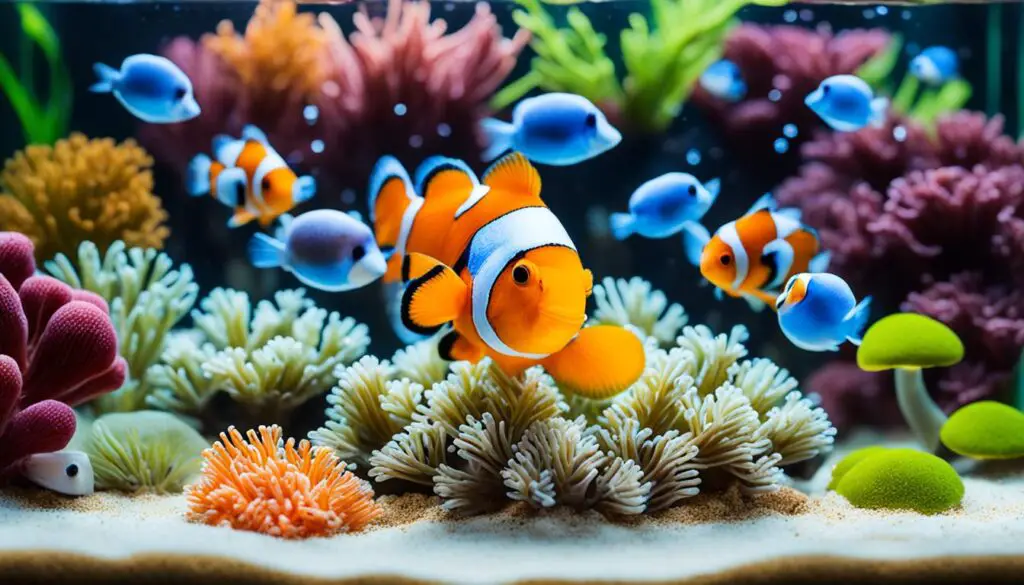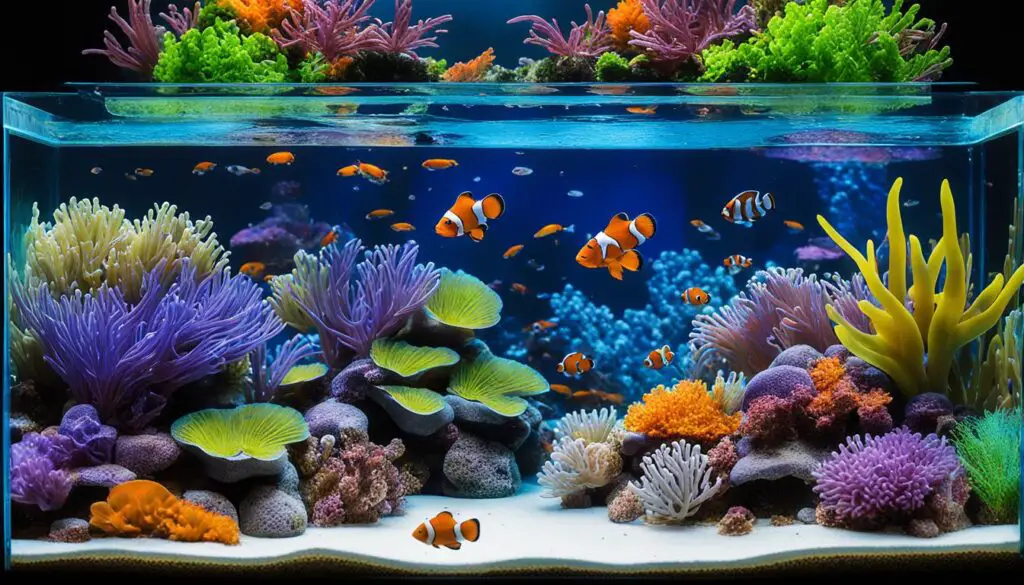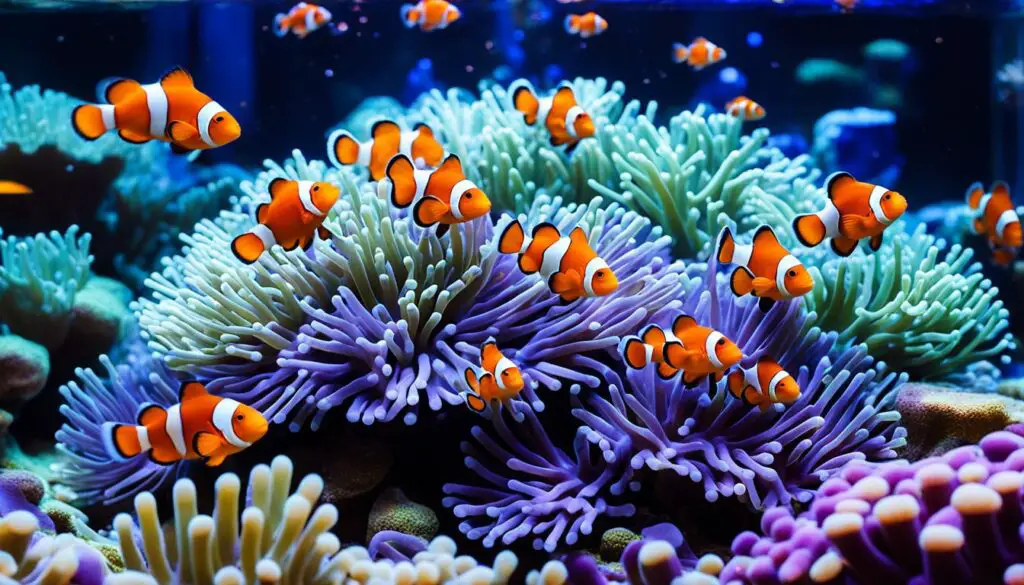Why Are Jellyfish Bioluminescent

Introduction
Why Are Jellyfish Bioluminescent: The ocean’s depths are a realm of enigmatic beauty, where many fascinating and mysterious creatures reside. Among these inhabitants, jellyfish stand out for their remarkable ability to be bioluminescent, creating a mesmerizing spectacle of light beneath the waves. Bioluminescence, the production and emission of light by living organisms, is a phenomenon that has long intrigued scientists and ocean enthusiasts alike.
At first glance, the luminous beauty of bioluminescent jellyfish appears to be a purely aesthetic feature, adding to the enchantment of the underwater world. However, this striking display is far more than a mere visual spectacle. Bioluminescence serves as a powerful tool in the jellyfish’s survival kit, aiding them in various aspects of their existence.
One of the primary reasons for the bioluminescence in jellyfish is predation. Many jellyfish, particularly those belonging to the Aequorea species, employ bioluminescence as a form of camouflage. They emit light to blend in with the ambient sunlight streaming down from the water’s surface, effectively making themselves invisible to predators lurking below.
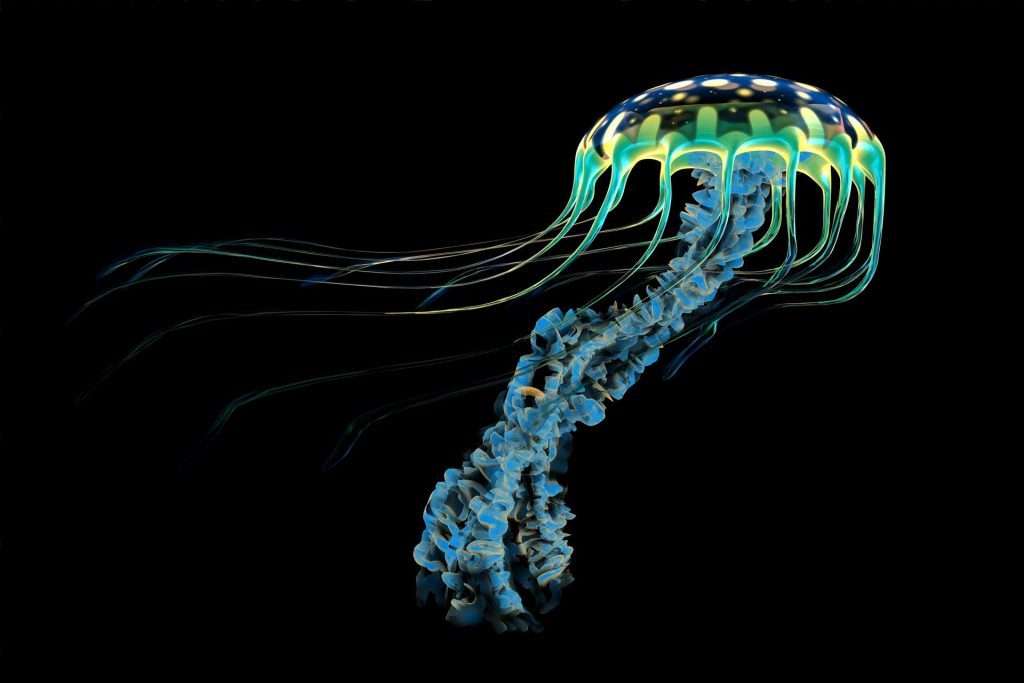
What causes bioluminescence in jellyfish?
The glow occurs when a substance called luciferin reacts with oxygen. This releases energy, and light is emitted. An enzyme called luciferase facilitates the reaction. Sometimes luciferin and luciferase are bound together with oxygen into a single molecule, or photoprotein.
The ethereal beauty of bioluminescent jellyfish, which turns the dark depths of the ocean into a mesmerizing spectacle of light, has intrigued scientists and nature enthusiasts for generations. But what exactly causes this extraordinary phenomenon, and why do jellyfish emit light? The answer lies in the remarkable interplay of biological components that have evolved over millions of years.
At the heart of bioluminescence in jellyfish are specialized cells called photocytes, which contain the necessary ingredients for this breathtaking light show. These cells are equipped with three essential components: luciferase enzymes, luciferin molecules, and oxygen. The magic begins when these elements come together.
Luciferase enzymes play a pivotal role in the process. When oxygen is available, these enzymes facilitate the reaction between luciferin and oxygen. This reaction, termed “oxidation,” leads to the release of energy in the form of visible light. Luciferin, the light-emitting molecule, is an organic compound that stores this energy.
One primary reason is predation. Bioluminescence serves as a camouflage mechanism for certain jellyfish species, particularly those belonging to the Aequorea group. These jellyfish emit light to blend in with the ambient sunlight filtering through the water’s surface. This effectively makes them invisible to predators lurking beneath, providing a layer of defense against potential threats.
Bioluminescence also serves as a powerful defense mechanism when the jellyfish are threatened. When in danger, certain species emit a burst of light, creating a blinding distraction for their potential attackers. This sudden burst of light startles and disorients the would-be assailant, affording the jellyfish a crucial opportunity to escape unscathed.
Are jellyfish fish bioluminescent?
Bioluminescent organisms produce and radiate light. There are thousands of bioluminescent animals, including species of fishes, squid, shrimps and jellyfish. The light these creatures emit is created inside their bodies, meaning they are able to glow and glitter in complete darkness.
Despite the name “jellyfish,” these intriguing marine creatures are not actually fish. Jellyfish are members of the phylum Cnidaria and are more closely related to corals and sea anemones than to true fish. Therefore, the term “jellyfish” can be somewhat misleading, but one thing that certainly isn’t is their bioluminescence, which adds an air of mystique to these gelatinous beings.
Bioluminescence is the ability to produce and emit light through a biochemical process, and jellyfish are one of the many remarkable organisms that exhibit this fascinating trait. However, it’s essential to clarify that jellyfish are not fish, as their name might imply. They belong to the phylum Cnidaria, which includes various other marine animals, but true fish are vertebrates from the phylum Chordata, distinctly different from jellyfish in terms of both classification and biology.
Jellyfish’s bioluminescence is made possible by specialized cells called photocytes, located primarily in their epidermis. These cells house the necessary ingredients for the production of light, including luciferase enzymes, luciferin molecules, and oxygen. The reaction between luciferase, luciferin, and oxygen results in the release of visible light, creating the mesmerizing bioluminescent displays that jellyfish are known for.
One significant reason for jellyfish bioluminescence is predation. Some species, notably those belonging to the Aequorea group, use it as a form of camouflage. By emitting light, they blend in with the ambient sunlight, effectively becoming invisible to predators lurking below. This adaptation allows them to avoid detection by larger marine creatures, such as fish and sea turtles.
Do bioluminescent jellyfish sting?
They may look like normal jellyfish, but they don’t sting. Comb jellies in Florida are known for creating colors by emitting a flashing green-blue light whenever kayakers’ hands or paddle disturbs them. They also create a glow by refracting light through the movement of their cilia.
Bioluminescent jellyfish, with their enchanting light displays, are some of the most captivating and intriguing creatures in the ocean. While they may be renowned for their mesmerizing glow, they also carry a less enchanting feature: their ability to sting, bioluminescent jellyfish do indeed have stinging cells, which are known as nematocysts, and these can deliver a painful sting.
The bioluminescence in jellyfish is not directly related to their stinging capabilities but is a separate feature. The beauty and light they emit are a result of specialized cells containing luciferase enzymes, luciferin molecules, and oxygen, which together create the mesmerizing glow when they react. However, it’s their stinging cells that play a significant role in their survival.
Nematocysts are microscopic, harpoon-like structures found on the tentacles and, in some cases, other body parts of jellyfish. When triggered, nematocysts release a coiled, venomous thread that can penetrate the skin of their prey or any potential threats, including humans. The venom in these stinging cells is intended to immobilize or kill the prey and deter predators.
The severity of a jellyfish sting can vary depending on the species and the individual’s sensitivity to the venom. While some stings may be relatively mild, resulting in discomfort and skin irritation, others can be excruciatingly painful and, in rare cases, even life-threatening. In the case of severe stings, medical attention may be necessary.
In fact, the extent of the venomousness varies widely among different jellyfish species. Some famous bioluminescent jellyfish, such as the moon jellyfish (Aurelia aurita), tend to have milder stings that are typically not harmful to humans. However, other species like the box jellyfish (Chironex fleckeri), known for their striking bioluminescence, have incredibly potent venom and can deliver life-threatening stings.
What do bioluminescent jellyfish eat?
Plankton
Jellyfish and ctenophores are carnivorous, and will eat just about anything they run into! Most jellies primarily eat plankton, tiny organisms that drift along in the water, although larger ones may also eat crustaceans, fish and even other jellyfish and comb jellies.
Bioluminescent jellyfish, those mesmerizing creatures of the deep with their enchanting light displays, possess a unique set of dietary preferences that play a pivotal role in their survival and the maintenance of their captivating glow. While they do not feed on light itself, these gelatinous marine animals have specific dietary habits that may surprise you.
Jellyfish, like their bioluminescent counterparts, belong to the phylum Cnidaria, which includes various species exhibiting a range of feeding behaviors. Although there is some variation in the diet of different jellyfish species, their primary sustenance typically consists of tiny aquatic organisms.
One of the main sources of nutrition for jellyfish is zooplankton, which includes small, drifting animals like copepods, krill, and other microorganisms. These tiny organisms are abundant in the world’s oceans and serve as a crucial food source for many marine creatures. Jellyfish are no exception, as they utilize their specialized tentacles, armed with stinging cells called nematocysts, to capture and immobilize these microscopic prey.
Jellyfish’s hunting strategy is often passive, involving a delicate dance of drifting through the water column with their tentacles extended. When zooplankton or other suitable prey make contact with their stinging tentacles, the nematocysts spring into action, injecting venom and securing a meal. The immobilized prey is then transported to the jellyfish’s central oral cavity, where the digestive process begins.
Some jellyfish species exhibit more active hunting behaviors. For example, certain box jellyfish have been observed to actively chase and capture prey, using their tentacles and stinging cells to secure a meal. This active predation strategy allows them to target slightly larger prey items than their passive counterparts.
How many jellyfish are bioluminescent?
50%
It is estimated that about 50% of jellyfish are bioluminescent. There are many different types represented, including siphonophores (related to the Portuguese man-o-war), medusae, sea pens and other soft corals, and ctenophores (comb jellies).
The oceans are a vast and mysterious realm, home to an astonishing diversity of life. Among the intriguing inhabitants of these deep waters are bioluminescent jellyfish. These mesmerizing creatures, with their glowing displays, have captured the imagination of scientists and nature enthusiasts.
Bioluminescence, the ability to produce and emit light through a biochemical process, is a phenomenon that has evolved in various marine organisms, not just jellyfish. In the case of jellyfish, a substantial number of species have been identified as bioluminescent. The exact count may vary as new discoveries are made and our understanding of these organisms continues to evolve. However, it’s estimated that several dozen jellyfish species exhibit bioluminescent capabilities.
One of the most well-known bioluminescent jellyfish species is the Aequorea victoria, also known as the crystal jellyfish. This jellyfish, often found along the west coast of North America, is famous for its pale blue-green bioluminescence, which is primarily used for predation and camouflage.
The crystal jellyfish is not alone in its luminescent abilities. Other jellyfish species, such as the Atolla jellyfish and the hydromedusa Sarsia tubulosa, are known for their bioluminescence. These organisms use their light displays for various purposes, including predation, defense, communication, and navigation.
Some species employ bioluminescence as a form of camouflage. By emitting light that matches the ambient sunlight filtering through the water, they become nearly invisible to predators lurking below. Others use it as a defensive mechanism. When threatened, they emit a burst of light, disorienting potential attackers and facilitating their escape.
Why do jellyfish need bioluminescence?
Most jellyfish bioluminescence is used for defense against predators. Jellyfish such as comb jellies produce bright flashes to startle a predator, others such as siphonophores can produce a chain of light or release thousands of glowing particles into the water as a mimic of small plankton to confuse the predator.
Jellyfish, those ethereal and gelatinous inhabitants of the ocean, have evolved a remarkable ability that sets them apart from other marine creatures—bioluminescence. But why do jellyfish need bioluminescence? What purpose does this captivating phenomenon serve in their survival and existence in the mysterious underwater world?
Bioluminescence in jellyfish is not a mere spectacle; it’s a multi-faceted adaptation that plays a vital role in their survival. One of the primary reasons for bioluminescence in jellyfish is predation. Many species, such as Aequorea victoria (the crystal jellyfish), employ this feature as a form of camouflage. By emitting light that matches the ambient sunlight filtering through the water’s surface, they effectively become invisible to predators lurking below. This unique adaptation allows them to evade the attention of larger marine predators, such as fish and sea turtles, which might otherwise find them delectable.
Bioluminescence in jellyfish also serves a distinct defensive purpose. When threatened, certain species emit a burst of light, creating a blinding distraction for their potential assailants. This startling light display startles and disorients the attacker, providing the jellyfish with an opportunity to escape and evade capture. In this way, bioluminescence acts as a remarkable defense mechanism, helping jellyfish survive in the competitive and perilous world of the ocean.
Intriguingly, bioluminescence is not solely about evading threats but also plays a significant role in jellyfish’s communication and reproduction. During their mating rituals, jellyfish emit distinct patterns of bioluminescent signals to attract potential mates. These signals, often species-specific, facilitate the recognition and pairing of suitable partners for reproduction.
How deep do bioluminescent jellyfish live?
For example, from the sea surface down to 1,500 meters, most of the glowing animals were jellyfish (medusae) or comb jellies (ctenophores). From 1,500 meters to 2,250 meters down, worms were the most abundant glowing animals.
Bioluminescent jellyfish, with their enchanting light displays, are among the most captivating and mysterious creatures of the ocean. To understand where they live in the vast expanse of the deep sea, we need to explore the depth ranges in which these mesmerizing beings are found and the reasons for their specific habitats.
Bioluminescent jellyfish inhabit various depth zones within the world’s oceans, from shallow coastal waters to the darkest, most remote parts of the abyss. Their preferred depth can vary depending on the species, but their choice of habitat is closely tied to their survival strategies and ecological niches.
In general, many bioluminescent jellyfish species are found in shallow coastal waters, particularly along coastlines and in bays. These areas offer a mix of nutrients and sunlight, creating favorable conditions for both plankton (their primary food source) and the jellyfish themselves. Some well-known species like the moon jellyfish (Aurelia aurita) and the cannonball jellyfish (Stomolophus meleagris) can be found in these relatively shallow environments.
Deeper within the ocean, some jellyfish species occupy the midwater or mesopelagic zone, which typically ranges from about 200 meters (656 feet) to 1,000 meters (3,280 feet) below the surface. These depths offer a transition zone where both bioluminescent organisms and those that prey on them coexist. Here, bioluminescent jellyfish utilize their light displays for a variety of purposes, including attracting mates, deterring predators, and capturing prey.
What is the name of the bioluminescent jellyfish?
Aequorea victoria, also sometimes called the crystal jelly, is a bioluminescent hydrozoan jellyfish, or hydromedusa, that is found off the west coast of North America. The species is best known as the source of aequorin (a photoprotein), and green fluorescent protein (GFP); two proteins involved in bioluminescence.
The world of bioluminescent jellyfish is a diverse and captivating one, comprising various species that showcase the mesmerizing phenomenon of underwater light displays. Each species of bioluminescent jellyfish has its unique characteristics, contributing to the captivating beauty and intrigue of the ocean’s depths.
One of the most iconic bioluminescent jellyfish is the “Aequorea victoria,” also known as the crystal jellyfish. This species, native to the Pacific Northwest of North America, has gained fame for its pale blue-green bioluminescence. Crystal jellyfish are often found in coastal regions and are renowned for their stunning, almost ethereal, light displays. The bioluminescence of the crystal jellyfish is primarily used for predation and camouflage, helping them blend in with the ambient sunlight to avoid detection by predators.
The “Atolla jellyfish” is another noteworthy species known for its bioluminescence. These jellyfish inhabit the deep sea, with some species found at extreme depths of up to 4,000 meters (13,000 feet). Atolla jellyfish are renowned for their striking red bioluminescent display. In the pitch-black abyss, their bioluminescence serves various purposes, such as attracting prey, deterring predators, and possibly engaging in communication.
Another captivating bioluminescent jellyfish is the “Mastigias papua,” commonly known as the spotted jellyfish. Native to the waters of the Indo-Pacific, spotted jellyfish possess bioluminescent organs at the base of their tentacles, which can create a mesmerizing light show when disturbed. While their bioluminescence may not be as pronounced as that of some other species, it is nonetheless a remarkable feature of these jellyfish.
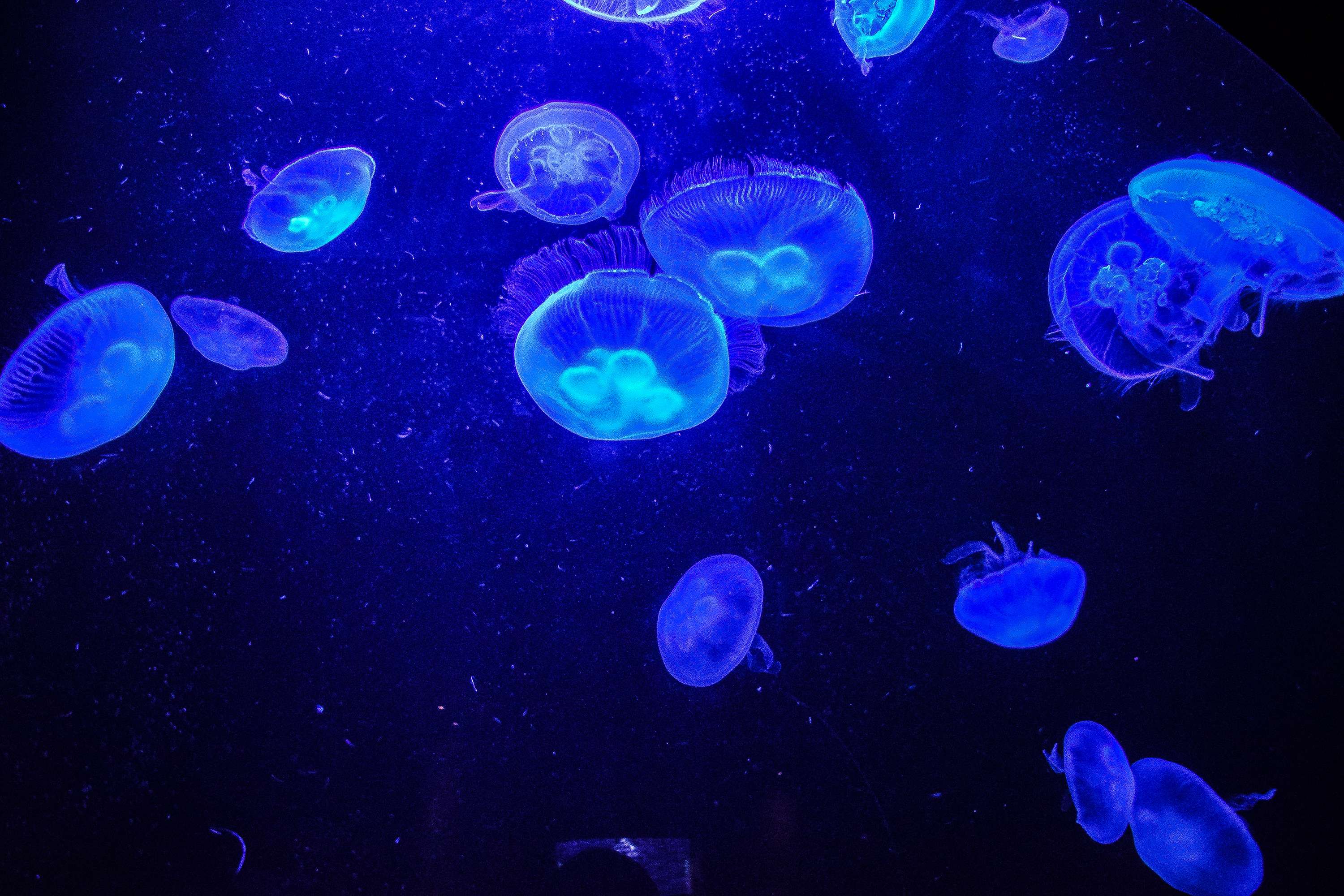
Conclusion
The bioluminescence of jellyfish unveils a captivating world of adaptation and survival strategies beneath the waves. These creatures have harnessed the power of light, creating a mesmerizing display that serves a multitude of essential functions in their underwater existence.
Jellyfish bioluminescence is more than a mere display of beauty; it is a matter of life and death. By emitting light, many jellyfish species expertly employ a form of camouflage that shields them from their predators. This adaptation not only helps them blend in with the ambient light but also allows them to move stealthily through the depths, evading the watchful eyes of larger marine creatures. It is a testament to the remarkable ways in which nature equips organisms with tools to survive in their respective environments.
Bioluminescence serves as a potent defense mechanism for jellyfish. When threatened, they can release a sudden burst of light, disorienting potential attackers and providing them with a precious window of escape. This dazzling display showcases the intricate strategies developed over time by jellyfish to ensure their continued existence in the competitive and sometimes perilous world of the ocean.

